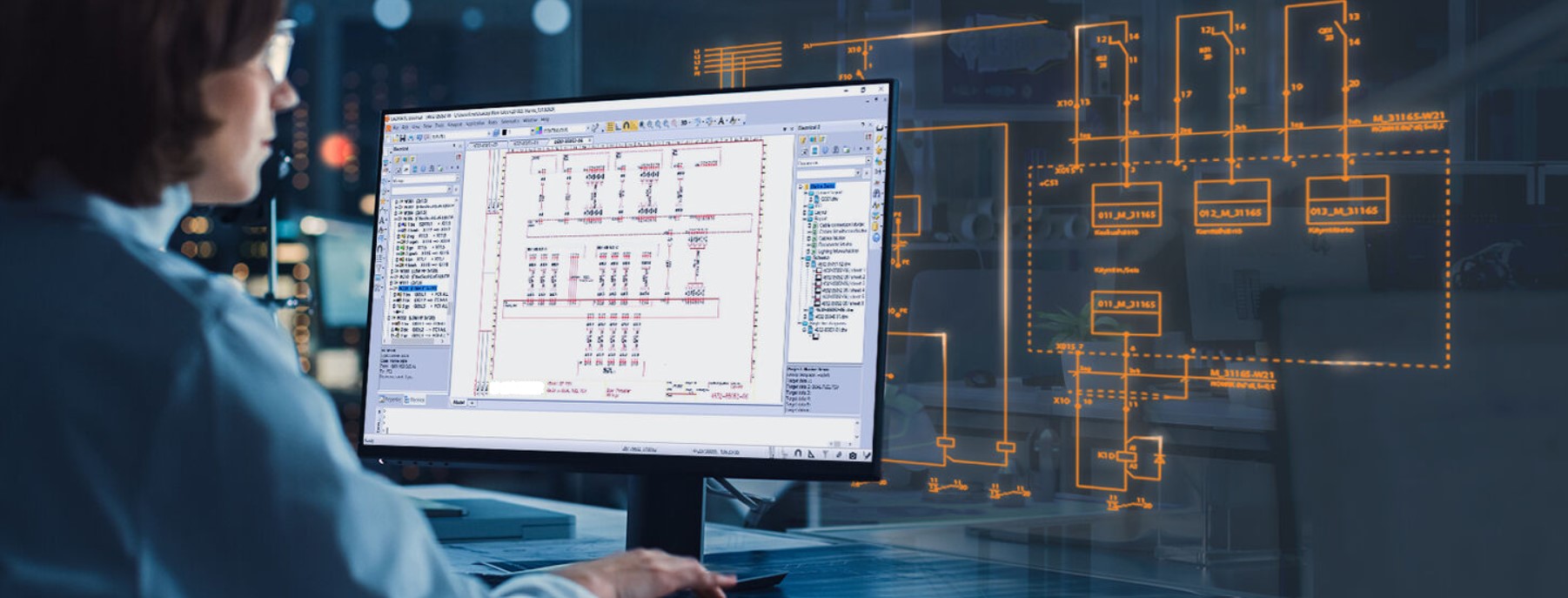Complete Industrial Electrical Design Services to Meet Complex Power Demands
Complete Industrial Electrical Design Services to Meet Complex Power Demands
Blog Article
Innovative Electrical Design Providers for Modern Facilities
The development of contemporary infrastructure demands ingenious electrical design services that not only improve operational effectiveness however additionally address sustainability difficulties. As metropolitan atmospheres expand progressively intricate, including technologies such as clever grids and renewable resource sources ends up being vital. These advancements not only guarantee to maximize power intake however additionally foster strength against future needs. However, the landscape of electric design is undertaking quick improvement, motivating a better assessment of emerging fads and their implications for lasting infrastructure practicality. What might the future hold for those who accept these ingenious approaches?
Significance of Cutting-edge Electric Design
Ingenious electrical design plays a crucial role in modern framework, affecting not only efficiency yet additionally sustainability. As cities develop and the need for power boosts, the need for sophisticated electric systems comes to be critical. These systems should not only meet existing needs but additionally anticipate future development and technological advancements.
A well-executed electric design can substantially reduce energy usage, thus reducing functional expenses and minimizing environmental impact. By including renewable resource sources, such as solar panels and wind generators, cutting-edge styles can boost power independence and resilience. Smart grid modern technologies enable for real-time tracking and management of power distribution, enhancing performance and lowering waste.
Safety is one more critical facet of electric design. Applying advanced innovations and extensive requirements can minimize risks connected with electric failures, guaranteeing a safe and secure setting for residents and organizations alike. Additionally, innovative designs facilitate adaptability, enabling infrastructures to incorporate arising technologies seamlessly.
Key Patterns in Electric Design
As the landscape of electric design remains to progress, numerous key trends are forming the future of the industry. One significant pattern is the assimilation of clever technology right into electrical systems. The proliferation of the Net of Things (IoT) has allowed real-time surveillance and control of electrical tools, enhancing performance and assisting in predictive maintenance.
Another fad is the expanding emphasis on modular design. This technique permits scalable and flexible services, allowing framework to adjust to changing requirements without considerable renovations. In addition, the usage of advanced simulation devices and Building Information Modeling (BIM) is becoming progressively widespread, simplifying the design procedure and enhancing cooperation amongst stakeholders.
Moreover, developments in materials science are leading to the development of lighter, extra long lasting, and energy-efficient parts. This innovation is specifically vital for high-performance buildings and facilities tasks.
Finally, there is a significant change towards data-driven decision-making - residential electrical design. Leveraging data analytics helps developers enhance systems for performance and cost-effectiveness. Together, these trends symbolize a transformative period in electric design, enhancing functionality, sustainability, and durability in contemporary infrastructure
Lasting Energy Solutions
Sustainable energy solutions are progressively ending up being a critical focus in electrical design, mirroring a more comprehensive dedication to ecological obligation and resource efficiency. These options aim to decrease ecological influence while maximizing energy intake in different frameworks, from household structures to huge industrial facilities.
One of the leading strategies involves the assimilation of renewable resource sources, such as photovoltaic panels and wind generators, into electric systems. This not just minimizes dependence on nonrenewable fuel sources but also improves energy strength. Additionally, ingenious energy storage space systems, such as sophisticated batteries, enable effective monitoring and circulation of energy, ensuring that surplus power created throughout optimal manufacturing can be used throughout high demand durations.
In addition, energy-efficient design methods are being taken on to improve general system efficiency. This consists of making use of energy-efficient lighting, cooling and heating systems, and clever structure modern technologies that adjust and check energy usage based on occupancy and ecological problems.
Smart Grid Technologies
The application of sustainable power options naturally brings Recommended Reading about the try this website expedition of smart grid technologies, which play a crucial duty in updating electrical systems. Smart grids utilize progressed communication technologies and data analytics to improve the dependability, efficiency, and sustainability of power circulation. By integrating electronic innovation with conventional grid infrastructure, these systems promote real-time surveillance, automated control, and improved decision-making capabilities.
Among the vital functions of wise grids is their capability to accommodate sustainable energy resources, such as solar and wind power. This adaptability not only lowers dependency on nonrenewable fuel sources yet also enables an extra decentralized energy manufacturing model. Wise grids make it possible for need reaction programs, where customers can readjust their energy usage based on real-time rates, thereby promoting energy preservation and decreasing peak lots needs.
Additionally, wise grid technologies enhance grid durability by enabling quicker identification and resolution of failures, ultimately decreasing downtime. With predictive maintenance and analytics, utilities can improve and enhance operations solution delivery. As cities and areas remain to progress, smart grid innovations are vital for building a reliable and lasting electric infrastructure that fulfills the demands of modern-day society.

Future-Proofing Infrastructure
To guarantee long-lasting feasibility and flexibility, future-proofing framework is essential in the quickly progressing landscape of electrical design solutions. As innovation advances and power needs change, it is essential that electrical systems are made with flexibility in mind. This entails incorporating scalable options that can fit future upgrades without necessitating comprehensive overhauls.

Furthermore, sustainability needs to be a cornerstone of future-proofed styles. Using renewable resource resources, such as solar and wind, and optimizing power effectiveness minimize reliance on fossil fuels, lining up with worldwide efforts to fight climate adjustment.
Verdict
By prioritizing performance, adaptability, and sustainability, these services address the advancing needs of power systems. The assimilation of wise grid technologies and lasting energy remedies boosts resilience and decreases functional costs.
A well-executed electrical design can significantly lower power intake, thereby decreasing operational expenses and decreasing environmental impact. By including renewable energy resources, such as solar panels and wind turbines, ingenious styles can enhance power independence and strength. In addition, innovative energy storage space systems, such as sophisticated batteries, allow efficient administration and distribution of power, ensuring that excess energy generated during top production can be made use of during high need durations.
Smart grids enable demand response programs, where consumers can change their power usage based check over here on real-time prices, consequently advertising energy conservation and reducing peak tons needs. (industrial electrical design)
As innovation advances and energy demands change, it is vital that electrical systems are made with versatility in mind.
Report this page